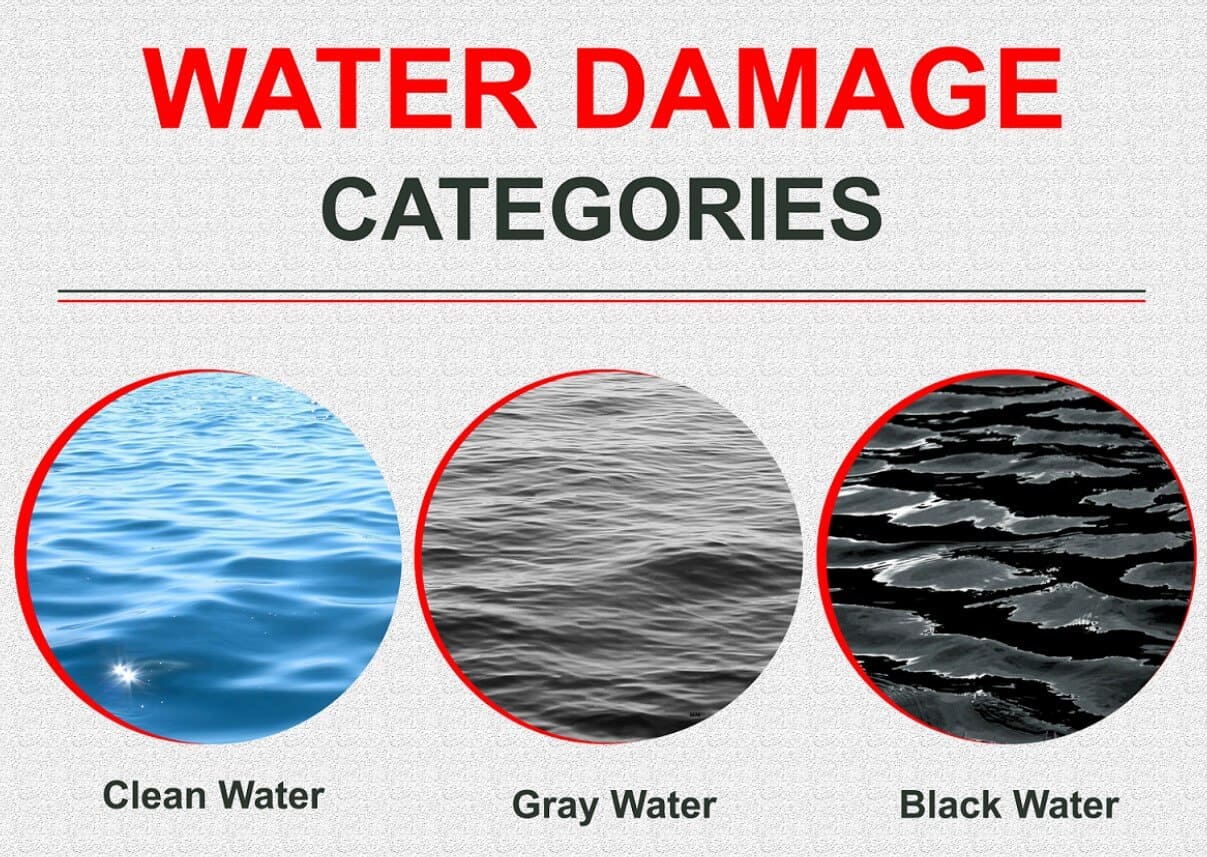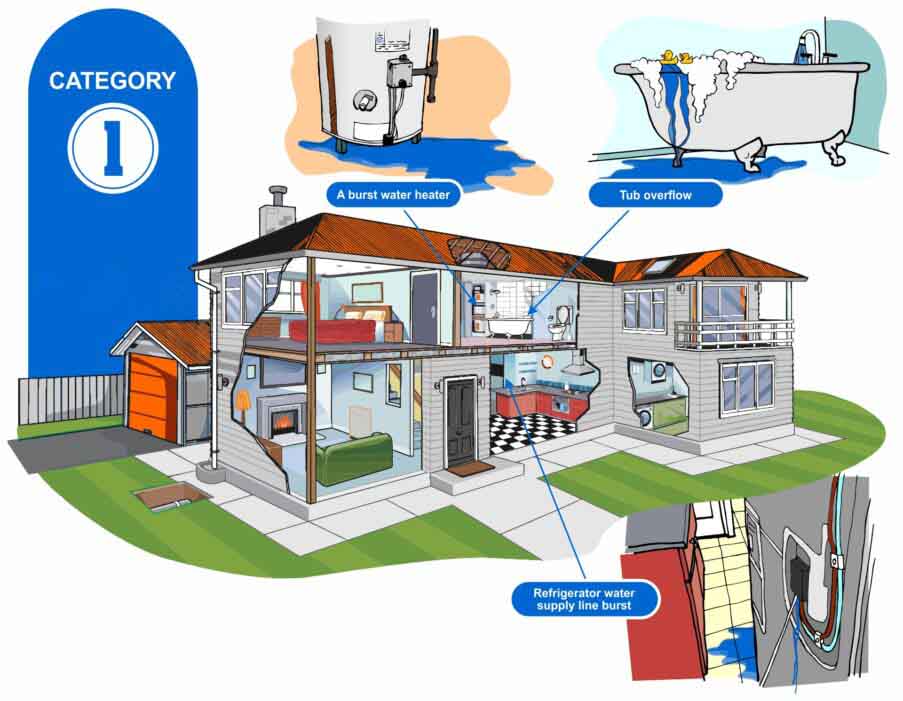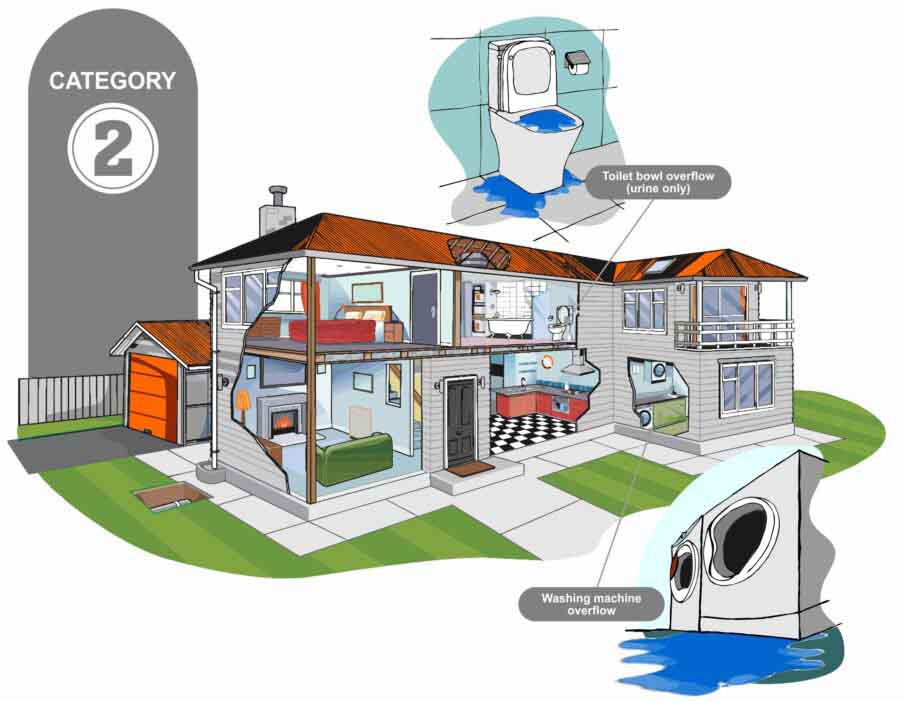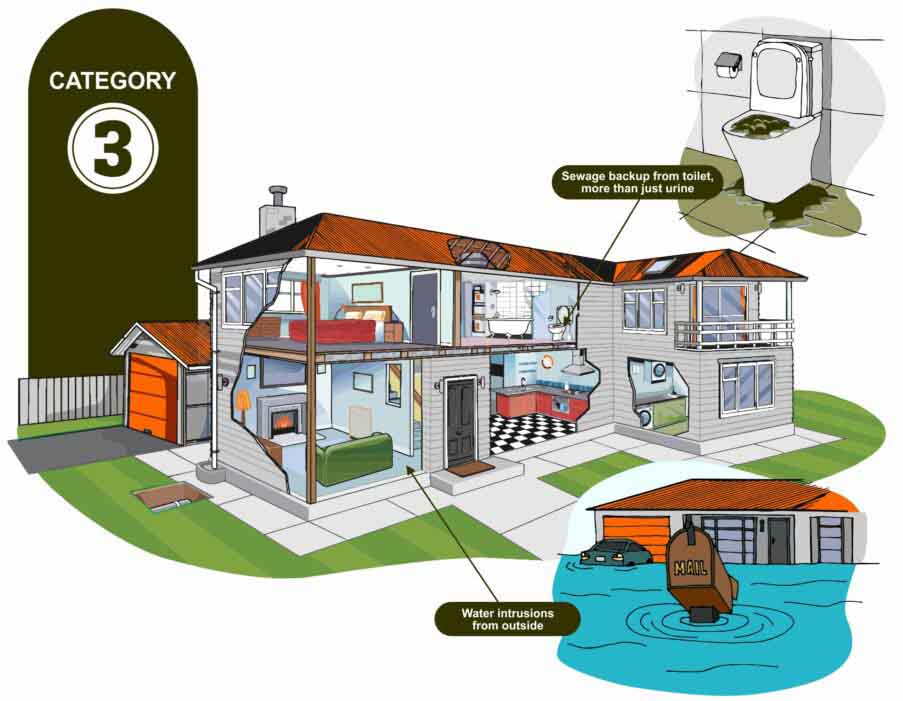
Water Damage Categories: Class 1-4 Explained
Water damage is one of the most common and costly issues homeowners face, often leading to structural damage, health risks, and extensive repairs if not addressed promptly. Whether caused by a minor leak or a catastrophic flood, understanding the type of water damage affecting your property is crucial for effective remediation. Water damage is typically classified into four categories, each with unique characteristics, risks, and restoration needs. These categories are based on the cleanliness of the water and the potential health hazards involved, ranging from clean water (Category 1) to highly contaminated black water (Category 3). Knowing these distinctions can help you make informed decisions during the restoration process.
Understanding the classification of water damage isn’t just a technical necessity; it’s a vital step in safeguarding your home and health. Each type of water damage poses different challenges and requires specific restoration approaches. For instance, while Category 1 water might seem harmless, delayed action can escalate it to a more hazardous category. On the other hand, Category 3 water demands immediate professional intervention due to its severe health risks. This blog post delves into the intricacies of water damage categories, providing detailed explanations and examples to help you identify and address water damage effectively.
Category 1 Water (Clean Water)

Definition and Characteristics of Category 1 Water
Category 1 water, often referred to as "clean water," is water that originates from a sanitary source and poses no immediate health risks. It is free of contaminants and safe for contact when it first escapes its source. This type of water damage is usually the easiest to clean up, as it does not involve harmful bacteria, chemicals, or toxins. However, if left untreated, even clean water can deteriorate into Category 2 or 3 due to microbial growth.
Common Sources of Category 1 Water Damage
The most common sources of Category 1 water damage include broken or leaking supply lines, overflowing sinks or bathtubs, and water heater malfunctions. Other potential sources are rainwater leaks through a damaged roof or clean water escaping from plumbing fixtures. While these situations may seem minor, they can lead to significant structural damage if not addressed quickly. At V Water Damage, we emphasize the importance of prompt action to mitigate risks and reduce restoration costs.
Potential Health Risks of Category 1 Water
Although Category 1 water is clean, prolonged exposure can still pose risks. Standing water can create an environment conducive to mold and mildew growth, which can cause respiratory issues and allergic reactions. Additionally, clean water can absorb contaminants from the surrounding environment, escalating the level of risk. Addressing Category 1 water damage promptly is essential to prevent escalation into more hazardous categories.
Category 2 Water (Gray Water)

Definition and Characteristics of Category 2 Water
Category 2 water, or "gray water," contains a significant level of contamination that may cause illness if ingested or exposed to skin. This water often includes chemical, biological, or physical contaminants, making it moderately hazardous. While not as dangerous as black water, gray water still requires careful handling and professional restoration techniques.
Examples of Category 2 Water Sources
Common examples of Category 2 water damage include overflows from washing machines, dishwashers, or sump pumps, as well as toilet overflows without solid waste. Water from aquariums or waterbeds may also fall under this category. These sources typically contain detergents, grease, or other pollutants that can cause harm to surfaces and pose health risks.
Health Hazards and Risks of Exposure to Category 2 Water
Exposure to Category 2 water can lead to skin irritation, gastrointestinal discomfort, and other health issues if ingested or absorbed through the skin. It can also accelerate material degradation in your home, such as warping wooden surfaces and corroding metals. At V Water Damage, our professionals are equipped to handle gray water incidents safely, minimizing the impact on your property and health.
Category 3 Water (Black Water)

Definition and Characteristics of Category 3 Water
Category 3 water, commonly known as "black water," is the most contaminated and hazardous type of water damage. This water often contains harmful bacteria, viruses, and toxins, posing severe health risks. It originates from highly unsanitary sources and requires immediate and thorough professional remediation.
Sources of Category 3 Water Damage
The sources of black water damage include sewage backups, flooding from rivers or streams, and stagnant water that has been sitting for an extended period. Other examples include water from toilet overflows containing solid waste or water contaminated with pesticides, heavy metals, or other toxins.
Dangers and Health Risks of Category 3 Water Exposure
Black water poses extreme health risks, including exposure to E. coli, Salmonella, and other harmful pathogens. Direct contact can lead to severe infections, respiratory problems, and even chronic illnesses. In addition to health hazards, black water can cause extensive structural damage to your property, often necessitating the removal and replacement of affected materials. At V Water Damage, we provide comprehensive remediation services to ensure your property is restored to a safe and livable condition.
Conclusion
Understanding the categories of water damage is essential for effective response and mitigation. Each category—whether clean, gray, or black water—comes with its own set of risks and challenges, requiring tailored restoration strategies. By identifying the type of water damage early and taking prompt action, you can minimize the impact on your property and protect your health.
When dealing with water damage, always prioritize safety and seek professional help. V Water Damage specializes in comprehensive water damage restoration, offering expert services to address issues across all categories. Our team is equipped with advanced tools and extensive experience to restore your property quickly and effectively. Contact us today to learn more about our services and safeguard your home against the dangers of water damage.
Dealing with water damage? Don’t wait for the problem to escalate! At V Water Damage, we provide fast and reliable water damage restoration services across the United States. Get a free quote today and let our experts restore your property to its original condition. Contact us now!
Get an extimateFrequently Asked Questions About Water Damage Restoration
Dealing with water damage can be overwhelming, but having the right information helps. Explore our FAQs for expert insights on restoration, costs, insurance, and prevention to safeguard your home.
The four classes of water damage are Class 1, Class 2, Class 3, and Class 4. These categories are based on the amount of water present and the materials affected, ranging from minimal to extensive damage.
Class 1 water damage is the least severe, typically affecting only part of a room with minimal absorption into materials like concrete or wood.
Class 2 water damage involves more extensive damage, affecting walls, carpets, and furniture. Water can spread throughout the room, requiring more comprehensive restoration.
Class 3 water damage occurs when water has soaked the majority of the building materials, including walls, ceilings, and carpets, often caused by a significant flood.
Class 4 water damage is the most severe, where water has completely saturated materials like hardwood, concrete, and stone, often requiring specialized drying equipment.
Examples of Class 1 water damage include a small leak that affects only part of a room or a wet spot on the floor that hasn’t soaked into walls or furniture.
Class 2 water damage can be identified when the water affects walls, carpets, and furniture, causing noticeable damage to both surfaces and materials.
Signs of Class 3 water damage include standing water, soaked carpets, and severely damaged ceilings or walls, usually caused by a burst pipe or flooding.
Specialized drying equipment is necessary for Class 4 water damage, especially when materials like concrete, hardwood, or stone have been affected by severe water saturation.
Water damage categories can affect insurance claims, as the extent of the damage often determines coverage. It’s essential to understand your policy and the water damage category when filing a claim.


![How Much Does Water Damage Restoration Cost? [Complete Price Guide 2024]](assets/images/blog/4.jpg)








